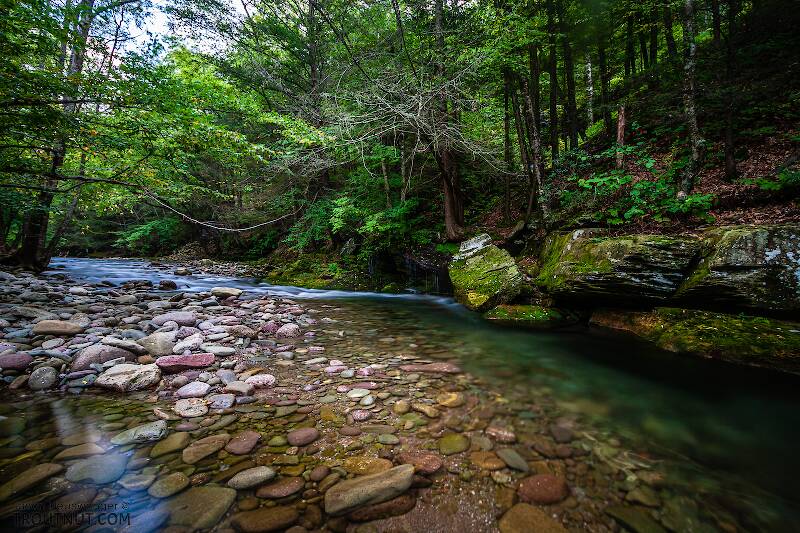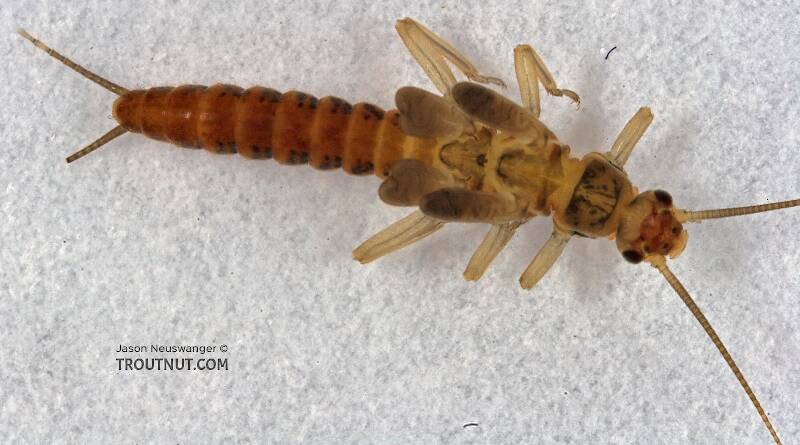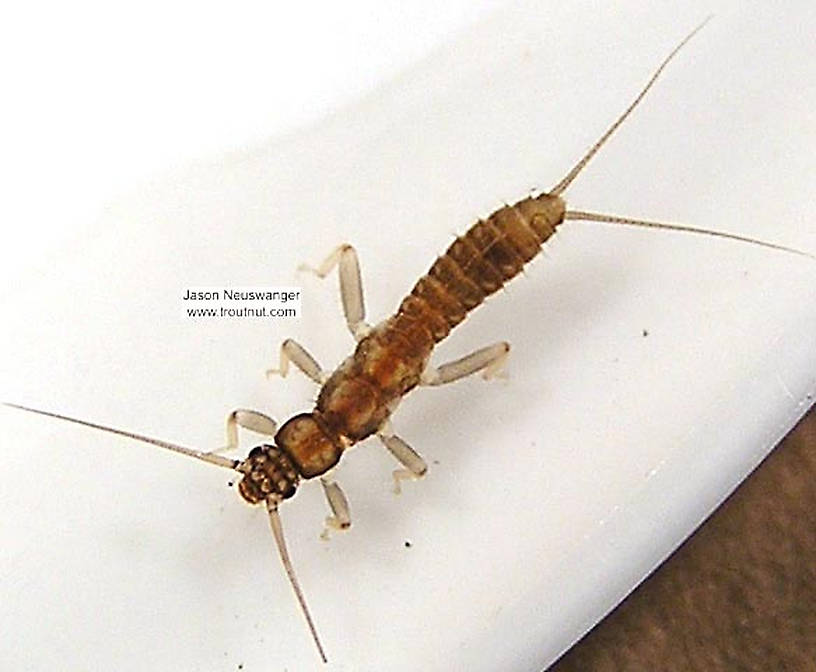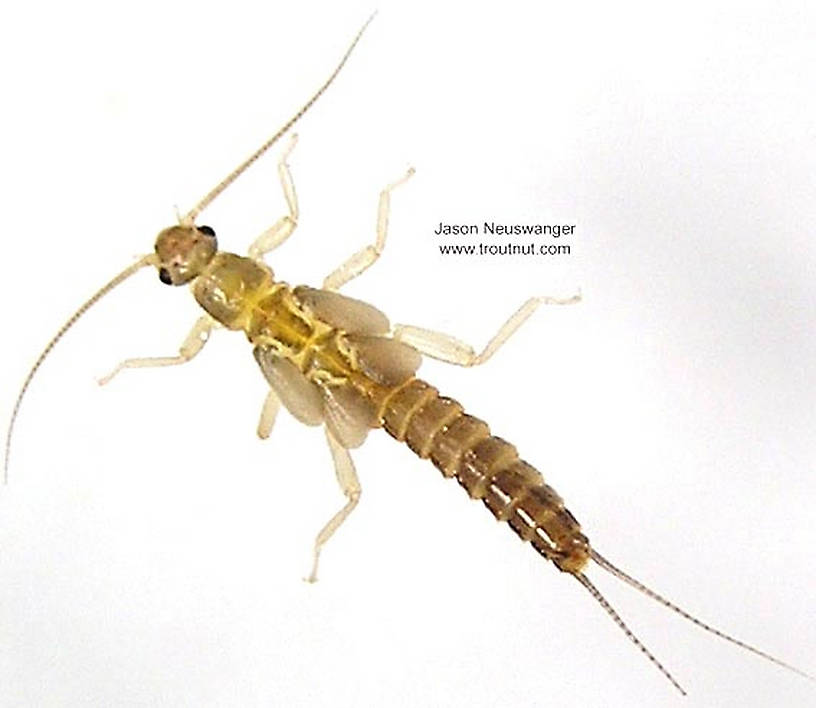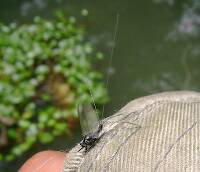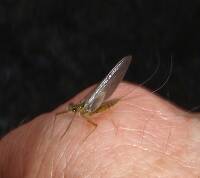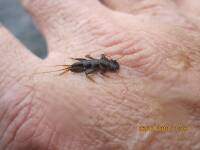
Hex Mayflies
Hexagenia limbata
The famous nocturnal Hex hatch of the Midwest (and a few other lucky locations) stirs to the surface mythically large brown trout that only touch streamers for the rest of the year.
Featured on the forum

Troutnut is a project started in 2003 by salmonid ecologist Jason "Troutnut" Neuswanger to help anglers and
fly tyers unabashedly embrace the entomological side of the sport. Learn more about Troutnut or
support the project for an enhanced experience here.
This topic is about the Stonefly Family Capniidae
These are the first stoneflies of the year to appear in most parts of the country, and often the first aquatic insects noticed by the angler. Their dark brown or black bodies are easy to spot against the snowbanks where they crawl around.Capnia in the West and Allocapnia in the East are probably the most common genera of this prolific family.
Example specimens
DarkDun
Posts: 16
Posts: 16
DarkDun on Nov 20, 2006November 20th, 2006, 3:38 pm EST
I like your site and all it offers. Would like you to come on down to the Southeast and identify our species of mayflies, caddis and plecoptera. Ours are a bit different in makeup than elsewhere and really need cataloging. We constantly are trying to compare our species to the northern hatches and it does not fit into their pattern. We are a month ahead of everywhere else and twice as long in many cases. Some hatches seem to be identifiable and then some defy easy categorization.
DarkDun
DarkDun
GONZO on Nov 20, 2006November 20th, 2006, 4:48 pm EST
Dark Dun,
Welcome. I'm sure you can find someone here that can help you sort out the Southern variations. While we Mid-Atlantic guys like to monopolize things, Jason has attracted extremely helpful and knowledgeable folks from all over. Litobrancha operates out of UT Knoxville--I'd bet anything that he's got a pretty good handle on most of what hatches in your neck of the woods. If you're interested in trout and the bugs they eat, you're among friends!
Welcome. I'm sure you can find someone here that can help you sort out the Southern variations. While we Mid-Atlantic guys like to monopolize things, Jason has attracted extremely helpful and knowledgeable folks from all over. Litobrancha operates out of UT Knoxville--I'd bet anything that he's got a pretty good handle on most of what hatches in your neck of the woods. If you're interested in trout and the bugs they eat, you're among friends!
Konchu on Nov 23, 2006November 23rd, 2006, 4:08 pm EST
I've got a little experience with SE mayflies. Try me.
Greenwolly on May 21, 2008May 21st, 2008, 2:11 pm EDT
yeah i live in the southeast and iam tryin to learn about our hatches i just cant get em straight i rekon that is because i dont comprehened what i read i learn better by hands on but i would love for someone to come to southern west virginia or anywhere where we have the same hatches so maybe i can learn a lil more about our specific kinds of hatches
"Eventually all things merge into one and a river runs through it. The river was cut by the world's great flood and runs over rocks from the basement of time. On some rocks are timeless raindrops. Under the rocks are the words, and some of the words are t
Quick Reply
Related Discussions
Topic
Replies
Last Reply
13
Jan 12, 2014
by PaulRoberts
by PaulRoberts
13
Mar 30, 2021
by Taxon
by Taxon

